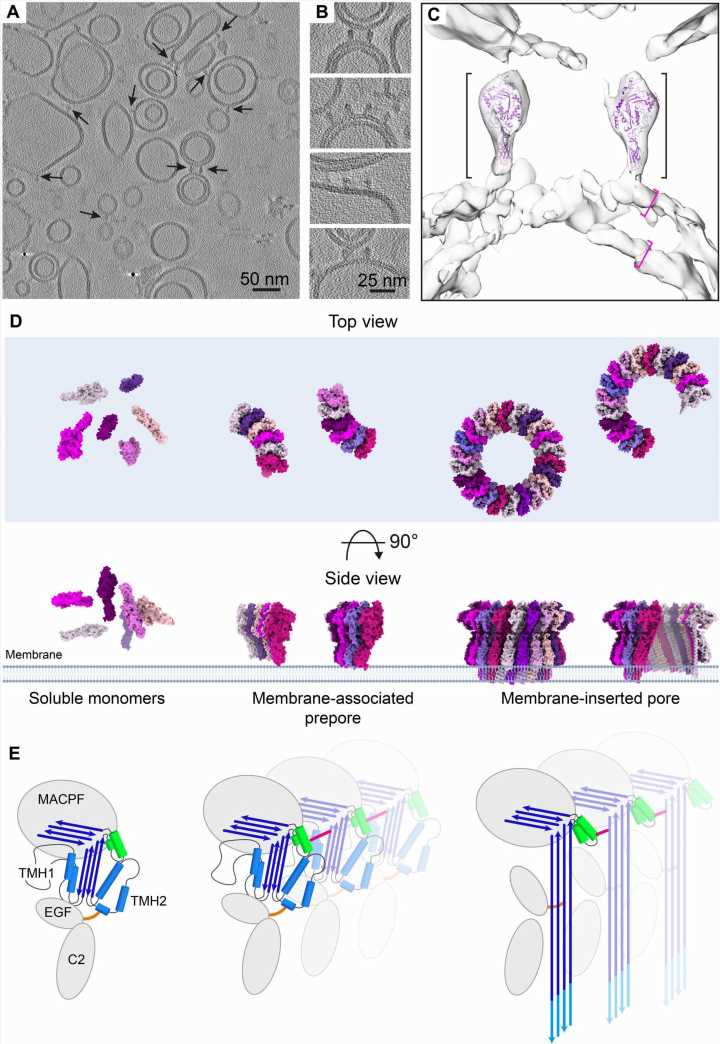
Peter Mac scientists are part of a research team that has determined the structure of a pore-forming protein used by the immune system to kill unwanted cells. The work was led by researchers in the Department of Biological Sciences at Birkbeck in the UK, with assistance from Peter Mac’s Professor Joe Trapani and Associate Professor Ilia Voskoboinik, and published in Science Advances last week.
The immune system uses cytotoxic T lymphocytes and natural killer cells to act as executioners when it detects the presence of virally infected or cancerous cells.
These cytotoxic and killer cells contain small membrane parcels filled with the protein perforin—which can punch holes through cell membranes—as well as toxic granzyme enzymes.
When an infected cell is detected, the killer cell latches onto it and ejects into it some of the membrane parcels with their toxic contents.
The perforin protein punches holes in the target cell membrane, through which the toxic granzymes enter, rapidly causing the target cell to die.
The cytotoxic and killer cells are professional assassins that can kill many victims in rapid succession, briefly attaching, ejecting their lethal cargo, and then moving on to the next victim.
Dr. Marina Ivanova, a former postdoctoral researcher at Birkbeck now at Imperial College, determined the perforin pore structure when she worked in Professor Helen Saibil’s group.
Understanding the details of perforin pore structure will help scientists design drugs to enhance or prevent its activity.
Source: Read Full Article






